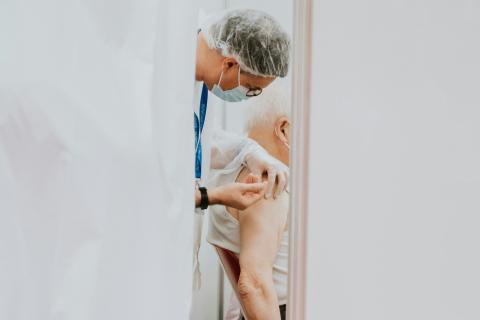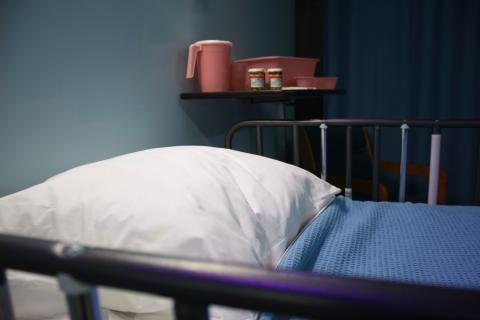
When Gary Kielhofner, a grounding theorist in the field of occupational science, proposed that humans should be conceptualized as being made up of three interrelated components, he gave occupational therapists a model of practice to guide our treatment. This model highlights the unique attributes that make humans occupational beings. These attributes are listed as volition (or motivation), habituation, and performance capacity. Other medical models often highlight performance capacity – the ability for someone to do something – as one of the most important factors in being “well.” If there was a disease to be cured or a symptom to treat, medicine historically focused on those factors driving intervention. Occupational therapists stayed within view of the medical model that most therapy services used but struggled to utilize the unique benefits of occupation.
Kielhofner’s Model of Human Occupation provided a more holistic approach. He proposed that the volition that is intrinsic to each person is a key factor in doing something meaningful (occupation). His model also highlighted the importance of habits embedded into these occupations, because he believed habits lead to role fulfillment: what we do is who we are and who we become. This view attempts to integrate the human person beyond their symptoms and disease that need to be cured and views them as a unique person with wants and needs that are a piece of the puzzle of wellness. He opened the door to studying occupational science, a vital facet in the field of occupational therapy. Consider, for example, an individual who paints beautiful pieces of art that line the walls of homes. The day-to-day schedule of painting makes this individual an artist. A human’s performance capacity to complete an occupation such as seeing his or her creation or holding the paintbrush is just one piece of the puzzle that Kielhofner believed influences the end goal of occupational adaptation.
In a society that often determines people’s worth in terms of what they can do (occupation) and how they can use the occupation to benefit society, Kielhofner’s model provided a reason for therapists to serve our clients – in short, to increase productivity in society. A driving force for third-party payers suggests an individual seeking therapy should have “rehab potential,” meaning the individual will be able to increase his or her independence in more productive roles.
The Model of Human Occupation has universally addressed diverse patients, from individuals with mental illness to people living with chronic pain. Within this framework, as long as therapists can articulate the three internal components – volition, habituation leading to role fulfillment, and performance capacity – they can begin the therapy process and address any environmental barriers. This model is limited, in some respect, to individuals with some semblance of performance capacity. It could easily fail to consider outliers in the mix of clients an occupational therapist may see. Think of a woman who may have lost her sight and can’t express her needs or motivation verbally. Perhaps due to an injury, she is now unable to participate in her job as an artist. What is her worth if she cannot benefit society by doing (occupation)? Additionally, occupational therapy’s rich history is humanistic. From its early conception of work being a cure to illness, theory is rooted in the idea that every person deserves to participate in some capacity in activities. This belief is being carried forward in widely used models promoting occupational justice. Most of these models and theories of occupation seek out to explain the interplay between the person, occupation, and environment. While each theory, including Kielhofner’s, attempts to describe the unique attributes of the human person, they suggest that wellness is the ultimate goal. All roads in therapy must lead to some form of realizing the client’s true vocation through adaptation or rehabilitation.
Examples such as these begin to show where Kielhofner was constrained in his ability to explain the human condition. If a majority of the occupations this outlier used to participate in have changed due to injury, we can’t pinpoint any habits she has that lead to role fulfillment. If we can’t determine adequate performance capacity, do we determine there is no “rehab potential” and throw in the towel because third-party payers are only interested in productive role fulfillment? If a human is only worth the occupations he or she can participate in, then this could suggest there is a threshold to his or her worth.
This is where a Christian vision of the human person helps us to see the deeper picture. Should a human’s worth be determined by these three attributes, or is it rather something given instead of earned? God has created each human person in his image, and this is where our dignity and value arise. Because dignity is inherited in the first moment of our creation, it is not something earned – and for that reason, cannot be eliminated. When medicine often looks at the human person as a problem to solve through treatment of a disease or curing symptoms, occupational therapists show strength in their ability to look at that same person more holistically. Due to the nature of our profession, there’s a beautiful opportunity to honor the dignity of a person using our models of practice, such as Kielhofner’s theory. But if we limit what we believe dignity is as healthcare practitioners, ascribing it to something with a threshold that can go up and down based on our interventions, we can easily lose the very reason participation in occupation is unique and necessary. This participation is not limited to what it can produce for society. On the contrary, this participation is meant to enhance the life of the individual doing the occupation. We use the art of doing to heal, not produce. Go back to the woman who experienced an injury that led to difficulties expressing her needs and ability to be an artist. Occupational therapists can provide and adjust the tools for her to experience art (listening to music) or create art (painting a textured picture or sculpture). Because we know she was born with dignity, we understand her worth isn’t in the end product but the experience of something. To listen to music to enjoy it, to dance for the sake of dancing, or to laugh with your child during the occupation of play does not produce a tangible outcome that society can package and sell. What a beautiful concept! God wants us to experience being human not for the production, but perhaps for the chance for us to be closer in communion with Him by participating in these occupations.
Healthcare providers can certainly benefit from Kielhofner’s theory to help explain the nature of occupation. However, if we do not also understand the incorruptible dignity of the human person we might miss the beauty and healing power of occupation-to dance like no one is watching.


